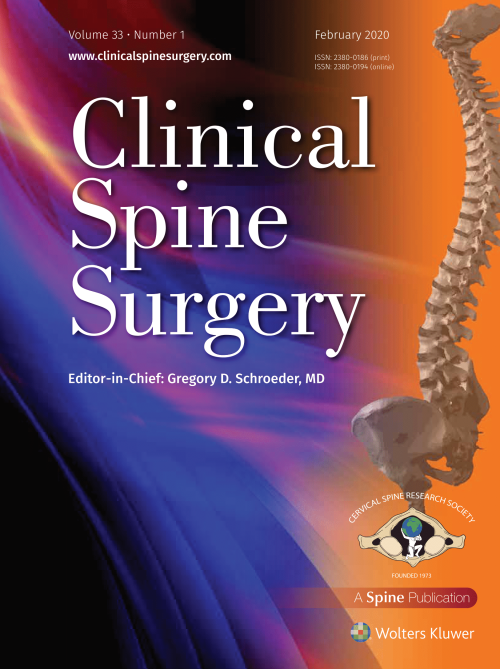
Glass Ceramic Spacer Increase Fusion Areas Long-Term Compared to Titanium During PLIF Surgery

Glass Ceramic Spacer Increase Fusion Areas Long-Term Compared to Titanium During PLIF Surgery
A Long-Term Follow-up, Multicenter, Comparative Study of the Radiologic, and Clinical Results Between a CaO-SiO2-P2O5-B2O3 Bioactive Glass Ceramics (BGS-7) Intervertebral Spacer and Titanium Cage in 1-Level Posterior Lumbar Interbody Fusion.
Clin Spine Surg. 2020 Aug;33(7):E322-E329Did you know you're eligible to earn 0.5 CME credits for reading this report? Click Here
Synopsis
Sixty patients undergoing 1-level posterior lumbar interbody fusion (PLIF) were randomized to receive a CaO-SiO2-P2O5-B2O3 glass ceramic (BGS-7) intervertebral spacer or a titanium cage filled with autologous local bone. This study used patients from a previous study. The primary outcome of interest included the bone fusion rate by 3D computed tomography (CT). Additional outcomes of interest inclu...
To view the full content, login to your account,
or start your 30-day FREE Trial today.
FREE TRIAL
LOGIN
Forgot Password?
Explore some of our unlocked ACE Reports below!

Learn about our AI Driven
High Impact Search Feature
Our AI driven High Impact metric calculates the impact an article will have by considering both the publishing journal and the content of the article itself. Built using the latest advances in natural language processing, OE High Impact predicts an article’s future number of citations better than impact factor alone.
Continue



 LOGIN
LOGIN

Join the Conversation
Please Login or Join to leave comments.